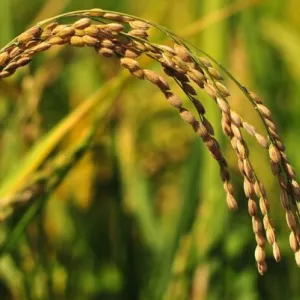The acceptability of locally adapted japonica rice variety in the Philippine market: A product market test approach
With the growing demand for japonica rice in the Philippines, imports fill out the gap. With the opportunities seen, efforts to adapt popular foreign rice varieties to the Philippine setting were considered a sound investment. Though economies of scale may not be achieved, a shorter value chain and the price premium for specialty rice may motivate the players and producers

The acceptability of locally adapted japonica rice variety in the Philippine market: A product market test approach
With the growing demand for japonica rice in the Philippines, imports fill out the gap. With the opportunities seen, efforts to adapt popular foreign rice varieties to the Philippine setting were considered a sound investment. Though economies of scale may not be achieved, a shorter value chain and the price premium for specialty rice may motivate the players and producers in the market to grow it locally. Successful deployment of varieties in the country goes beyond its laboratory and field tests. Given that japonica rice is considered to be a specialty rice in the country, the involvement of the value chain in this effort is crucial as they will be the actors who will bring such into the baskets of the consumers.
Filipino’s tastes and preferences towards food have become more diverse in recent years. Though American, Italian, Mexican, Japanese, and Middle Eastern cuisines have long been on the plates and baskets of consumers, Korean cuisine has only been recently popular.
This popularity, fueled by Korean pop culture and media, has been also manifesting in the economy, evidenced by mushrooming Korean convenience stores and restaurants offering Samgyeopsal all over the country. In fact, in a four-year measurement, the number of Korean restaurants grew by 81.2% in 2018 according to the Korean Food Promotion Institute.
This trend and development were seen to be a potential and an opportunity to influence demand on one of the major components of their cuisine -japonica rice. Japonica rice has been present in the country even before the popularity of Korea in the media and market. The fondness of Filipinos towards Japanese cuisine was already expected as both cultures have a particular love for rice.
Among Filipino, Japanese, and Korean meals, rice has been an integral part, if not the center of every meal. The demand growth possibility and the premium that japonica rice commands translate to a market potential on the supply side which may benefit local farmers in the Philippines. In the country, the area planted with japonica rice production is small which translates to a lower local supply in the market.
With the growing demand for japonica rice, imports fill out the gap. With the opportunities seen, efforts to adapt popular foreign rice varieties to the Philippine setting were considered a sound investment. Though economies of scale may not be achieved, a shorter value chain and the price premium for specialty rice may motivate the players and producers in the market to grow it locally.
Activities have been done to develop a variety suitable for the conditions of the country.
Breeders at the International Rice Research Institute (IRRI) and South Korea’s Rural Development Authority (RDA), through the Grain Utilization Value Added (GUVA) have developed the following cultivars adapted to the Philippines: MS11 (NSIC170 SR), Japonica 1 (NSIC Rc220 SR), Japonica 2 (NSIC Rc242 SR), Japonica 6 (NSIC Rc484 SR), Japonica 7 (NSIC 2019 Rc584 SR), and Cordillera 4 (NSIC 2019 Rc566 SR SR).

